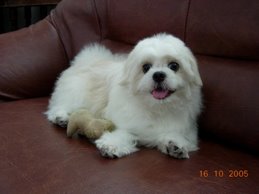Alpaca Shearing Facts
Every alpaca farmer knows that there is a great amount of planning to be done before the alpaca shearing process begins. One of the most important aspects of alpaca farming is ensuring that the area where the animals will be grazing is kept as clean as possible. Shearing is difficult enough to do without the animals having debris buried in their fiber. The thistle and weeds can stick in the fiber and this increases the difficulty of the shearing process.
The closer the debris is allowed to get to the skin, the harder it is to remove, the more it dulls the shears, and the chances of nicks to the animal or the shearer are increased. If they can be placed in an even clearer pasture prior to shearing, the extra effort will be worth it.
Alpacas by nature are very docile animals but it is still necessary for the farmer to have a familiarity with them. When it comes to shearing time the trust between farmer and animal will make the process easier. It is advisable to groom the animals between shearing as this will ensure that during the shearing process the fiber is easier to handle. The alpaca will also become accustomed to the noises of any blowers or vacuums used in the grooming.
It is better to use vacuums rather than blowers as they do not disturb the fiber as much. The shearer's task will be made easier and the animal will be less stressed by the noise made from the shears and vacuum if the fiber is combed into sections. Like any other process, shearing requires the correct tools for it to be efficiently done.
It is of the utmost importance that the shears being used are sharp and they should be the type that has exchangeable cutters. Also required are combs and lubricant for the shearing blades as well as tarpaulins which can catch the fiber. Other items of importance are antibiotic creams and a remedy for stressed animals.
Although alpacas are known to be docile it is recommended that some kind of restraining method is used while shearing to prevent the animal from being injured. There are a variety of methods that can be used to restrain them and the method used is dependent on the preference of the shearer. The easiest method for the shearer is to have restraints for the animals head and a wall that the shearer can lean against. This allows the alpaca to be sheared in the standing position.
It is very common for alpacas to attempt to lie down during the process which makes shearing of the belly a difficult task for the shearer. To prevent this happening they can be tethered to posts in the ground with their front feet spread wide enabling the shearing of the belly much easier.
It is possible to shear alpacas using the same methods used on sheep because alpacas are larger and therefore more difficult to restrain. Using a tilt table to restrain the alpaca is a good method for both the animal and the shearer, because the shearer can do his work in a standing position, the animal is restrained in a good manner and it allows the alpaca shearing to be done quickly.
The closer the debris is allowed to get to the skin, the harder it is to remove, the more it dulls the shears, and the chances of nicks to the animal or the shearer are increased. If they can be placed in an even clearer pasture prior to shearing, the extra effort will be worth it.
Alpacas by nature are very docile animals but it is still necessary for the farmer to have a familiarity with them. When it comes to shearing time the trust between farmer and animal will make the process easier. It is advisable to groom the animals between shearing as this will ensure that during the shearing process the fiber is easier to handle. The alpaca will also become accustomed to the noises of any blowers or vacuums used in the grooming.
It is better to use vacuums rather than blowers as they do not disturb the fiber as much. The shearer's task will be made easier and the animal will be less stressed by the noise made from the shears and vacuum if the fiber is combed into sections. Like any other process, shearing requires the correct tools for it to be efficiently done.
It is of the utmost importance that the shears being used are sharp and they should be the type that has exchangeable cutters. Also required are combs and lubricant for the shearing blades as well as tarpaulins which can catch the fiber. Other items of importance are antibiotic creams and a remedy for stressed animals.
Although alpacas are known to be docile it is recommended that some kind of restraining method is used while shearing to prevent the animal from being injured. There are a variety of methods that can be used to restrain them and the method used is dependent on the preference of the shearer. The easiest method for the shearer is to have restraints for the animals head and a wall that the shearer can lean against. This allows the alpaca to be sheared in the standing position.
It is very common for alpacas to attempt to lie down during the process which makes shearing of the belly a difficult task for the shearer. To prevent this happening they can be tethered to posts in the ground with their front feet spread wide enabling the shearing of the belly much easier.
It is possible to shear alpacas using the same methods used on sheep because alpacas are larger and therefore more difficult to restrain. Using a tilt table to restrain the alpaca is a good method for both the animal and the shearer, because the shearer can do his work in a standing position, the animal is restrained in a good manner and it allows the alpaca shearing to be done quickly.
About the Author:
Alternative farming such as alpaca farming and deer farming, and if space is a limitation, then also rabbit farming, are all ways for farmers to generate extra income.
>














.jpg)






.jpg)

0 comments:
Post a Comment